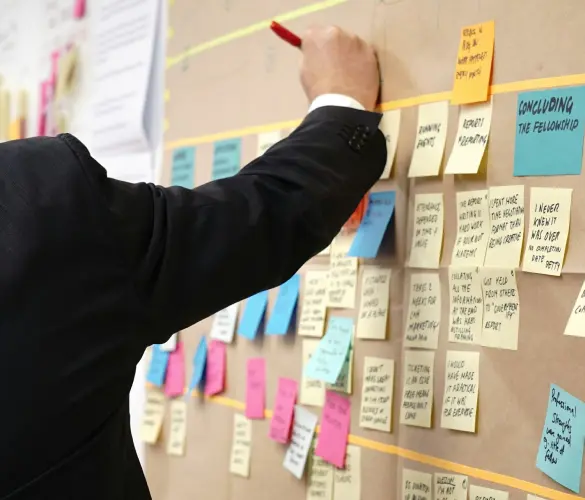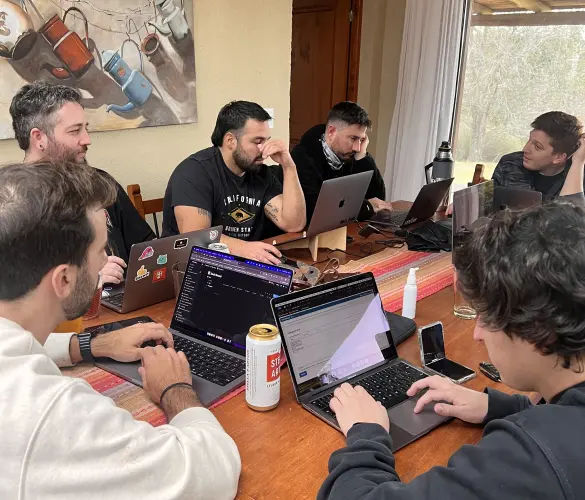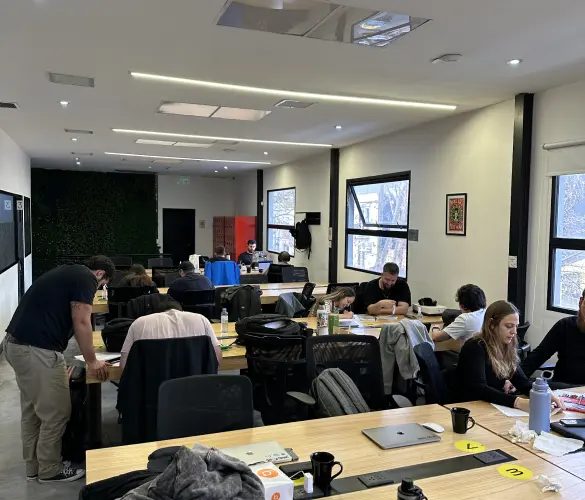Unexpected complications are inevitable in any WordPress development project. Whether it’s a design change, an unforeseen technical problem, or a critical delivery under a tight deadline, the ability to adjust priorities quickly can be the difference between success and failure.
This article will explore how we manage critical situations, describing our strategies for prioritizing complex tasks, adjusting delivery times, and ensuring that project objectives remain the main focus moving forward.
We will share real-world examples of critical decisions and key lessons for managing projects under pressure. Hopefully, you can apply what we’ve learned to your own projects.
How We Identify Critical Issues
The key to avoiding major crises is the early detection of potential problems. An example is a recent project where we identified a problem with the approved designs.
The designs had unintended changes that we didn’t approve or know about. The client made these changes without notifying us, so we had to realign our communication with both the client and our team in order to get the project back on track.
We detected these changes as the project progressed and determined that we needed to address them before they negatively impacted our team’s efficiency.
Let’s break down the strategies and tools we used to identify critical issues like this and how we managed them moving forward.
Tools and Methods Used to Identify Critical Issues in WordPress Projects
The following are the main tools and strategies we use to spot problems that can easily snowball and derail WordPress projects.
Figma
Figma is a collaborative design tool where we keep all our mockups and other web designs.
Seeing that the client had editing access to the designs, we created a copy of the approved file to avoid accidental modifications. This measure prevented us from wasting time due to unnecessary adjustments.
Blueprints Approved by the Client
In projects that involve web design, we create a detailed blueprint of all the custom WordPress blocks to be developed. The customer reviews and approves these blueprints before development begins, ensuring that subsequent changes are kept to a minimum.
This early detection and creation of blueprints allowed us to keep the project on track and avoid wasting time on corrections.
How to Prioritize Tasks Under Pressure
In critical situations, we have had to make difficult decisions to avoid delays. In projects with immovable deadlines, we found ourselves with little time and many pending tasks. When these situations happen, we prioritize the features that are essential for the launch and leave secondary tasks for later.
Here’s how we prioritize which features to focus on in critical situations.
Prioritize User-Facing Features
When racing against tight deadlines, we sometimes delay internal automation for backend data entry and maintain temporary manual entry instead. This allows us to launch sites on time without compromising the end-user experience.
Identify Essential Tasks
When deciding which tasks to defer, we prioritize those critical to achieving key project objectives. We evaluate each task’s impact on the website’s stability and functionality, prioritizing those necessary for a successful launch and meeting the client’s expectations.
This approach allows us to meet the client’s deadline while maintaining a high standard of quality in the most visible areas of the website.
Be Ready to Reorganize Resources for Tight Deadlines
When a stage of the project requires more time than expected, it is essential to reorganize resources without affecting the quality of work on other projects. To do this, we maintain constant communication between project leaders and the operations team.
We organize frequent meetings with the team to adjust workloads, seeking to meet the objectives of all projects without overloading the team.
To prevent excessive workloads, we postpone tasks that are not essential to the project’s main objective. We focus on prioritizing the tasks that have the greatest impact on the stability of the project and the client’s expectations.
Always Communicate Transparently With the Client
When a complication arises in a project, we always maintain transparent communication with the client, explaining the situation and all the steps we are taking to ensure the team accomplishes the goals of the project.
Here’s how we promote transparent communication with clients.
Proactive Communication
We present the problem and possible solutions and explain each one’s advantages and disadvantages. This approach helps the client feel that the situation is under control.
Regular Updates
We always keep the customer informed of progress, which helps us manage expectations and maintain trust.
Being transparent and updating clients regularly on progress helps us navigate tight deadlines and strengthens our relationship with the client, ensuring they feel involved and satisfied with the process.
What Have We Learned From While Making Critical Decisions in WordPress Projects?
Throughout several projects, we have learned that flexibility is key to managing critical situations like tight deadlines.
Using techniques like prioritizing essential tasks over non-essential ones and communicating transparently with clients allows us to deliver projects as planned and significantly improve the final outcome.
As a result of this experience, we have adapted our methodologies to improve internal communication between project leaders, teams, and the client, allowing us to anticipate problems before they become crises.
These lessons have enabled us to save projects in critical situations and improved our efficiency and client satisfaction.
If you found this post useful, read our blog and developer resources for more insights and guides!
Related Articles

Business / 12 min read
Business / 12 min read
How to Take on More WordPress Development Projects While Maintaining Quality
As a digital agency that provides WordPress services, your job is to take on as many projects as possible while maintaining the highest quality. This is easier said than done…
Read More
Business / 9 min read
Business / 9 min read
How to Choose a WordPress Development Agency to Scale Your Projects?
When your agency starts to scale, you may decide that a big part of your expansion will be providing WordPress services. If that's the case but you don't have an…
Read More
Business / 7 min read
Business / 7 min read
How to Optimize Time and Resources in WordPress Projects
WordPress agencies need to optimize and human resources use in order for their services (development, QA, design, etc.) to be profitable. They need to plan these projects very thoroughly to…
Read More
Business / 11 min read
Business / 11 min read
How WordPress Outsourcing Can Help Scale Your Agency
WordPress development outsourcing is becoming more frequent and affordable every day, helping global digital agencies of all sizes scale their services without the long-term investment of hiring an in-house team.…
Read More
Business / 8 min read
Business / 8 min read
What Is a White Label WordPress Development Agency?
A white label WordPress development agency is a company of WordPress developers, QA analysts, and project managers who provide outsourced services to digital agencies that lack a development team. Importantly,…
Read More
